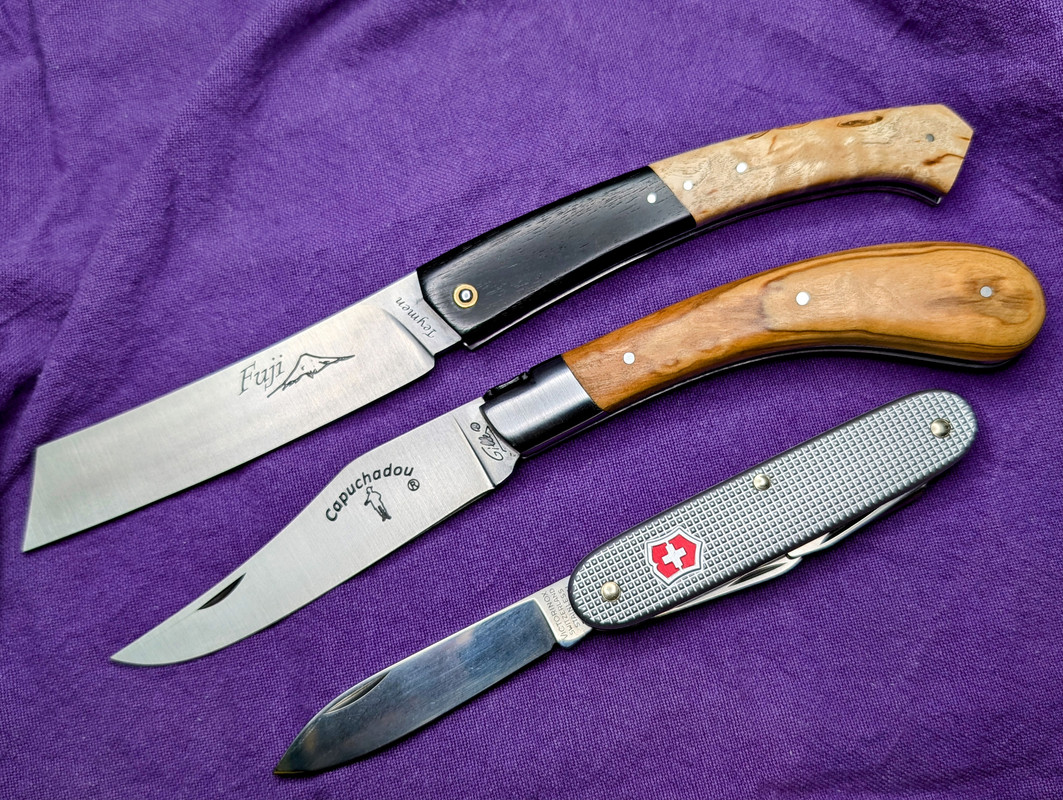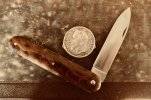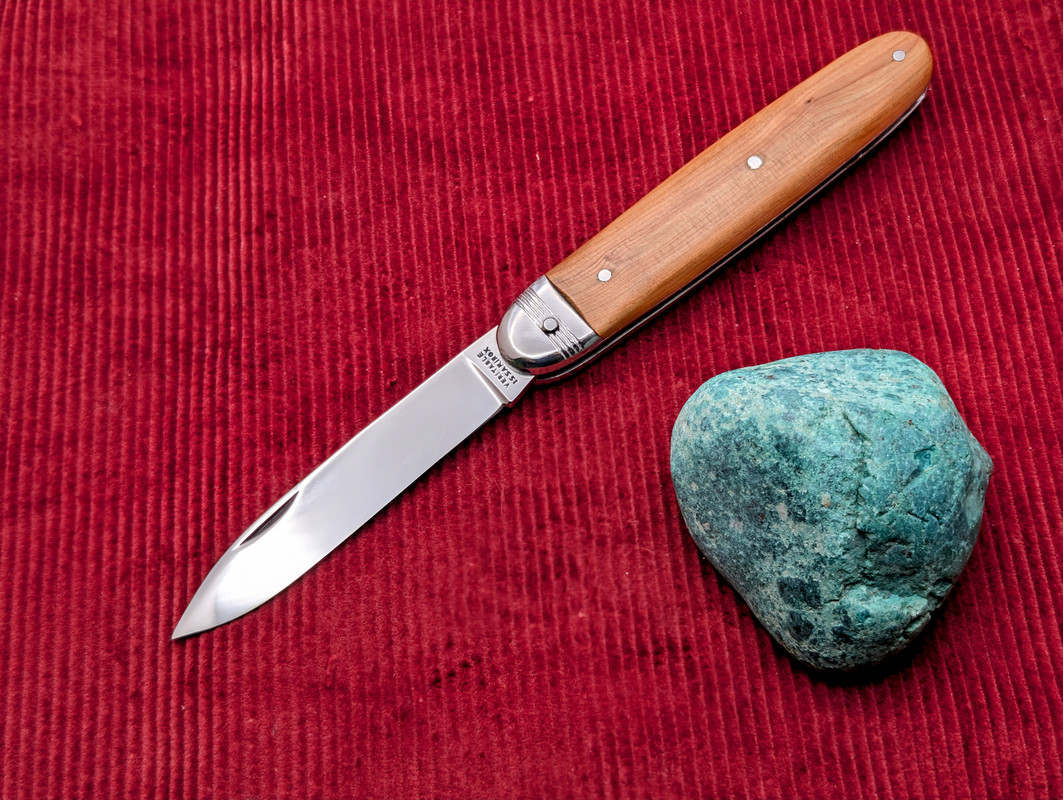-
The BladeForums.com 2024 Traditional Knife is available! Price is $250 ea (shipped within CONUS).
Order here: https://www.bladeforums.com/help/2024-traditional/
You are using an out of date browser. It may not display this or other websites correctly.
You should upgrade or use an alternative browser.
You should upgrade or use an alternative browser.
Traditional French Fry day
- Thread starter Gary W. Graley
- Start date
cbach8tw
Platinum Member
- Joined
- Jan 9, 2006
- Messages
- 12,524
I will ask this here, to keep the thread active , but also because I am curious as to why French knives stay with the tried and true Sandvik steels for most of the generic cutlery? I know carbon steel xc75 and others are used but why do you think most general French knives stay with Sandvik? I do notice that Sandvik keeps a fine edge is easy to sharpen, I have liked it. So I answered my own question, but would like to hear others’ ideas and opinions.
- Joined
- Mar 24, 2020
- Messages
- 885
Anothre "Le Thiers" by Chambriard. This one with ironwood scales and a backlock.






Will Power
Gold Member
- Joined
- Jan 18, 2007
- Messages
- 33,569
I suspect it is to do with costs: ordinary production knives probably don't make a large profit so It's necessary to have a reliable and available (in these times of shortage/disruption) steel that can offer the customer good retention & ease of sharpening. I've heard some people in other places sneer at Sandvik but when you have a pocket-knife that does relatively simple tasks why do you need a wonder expensive steel that's going to cost a lot? This is the preserve of expensive Moderns in my view. I understand your point about other steels being an option but I rather think ordinary manufacturers will stick with the reliable and available. Digressing a bit, GEC sticks almost exclusively to carbon, carbon, carbon their Tool Steel offerings are extinct & stainless a rare bird and now watered down to 420cI will ask this here, to keep the thread active , but also because I am curious as to why French knives stay with the tried and true Sandvik steels for most of the generic cutlery? I know carbon steel xc75 and others are used but why do you think most general French knives stay with Sandvik? I do notice that Sandvik keeps a fine edge is easy to sharpen, I have liked it. So I answered my own question, but would like to hear others’ ideas and opinions.
Others likely know more, but I like Sandvik as a run of the mill. Artisan makers do offer other steels but they cost a lot more.
Thanks, Will
Will Power
Gold Member
- Joined
- Jan 18, 2007
- Messages
- 33,569
- Joined
- Mar 24, 2020
- Messages
- 885
A „Puy Cervier“!?!
The Zieg
Gold Member
- Joined
- Jan 31, 2002
- Messages
- 5,007
A „Puy Cervier“!?!
kamagong
Gold Member
- Joined
- Jan 13, 2001
- Messages
- 10,962
I will ask this here, to keep the thread active , but also because I am curious as to why French knives stay with the tried and true Sandvik steels for most of the generic cutlery? I know carbon steel xc75 and others are used but why do you think most general French knives stay with Sandvik? I do notice that Sandvik keeps a fine edge is easy to sharpen, I have liked it. So I answered my own question, but would like to hear others’ ideas and opinions.
I suspect it is to do with costs: ordinary production knives probably don't make a large profit so It's necessary to have a reliable and available (in these times of shortage/disruption) steel that can offer the customer good retention & ease of sharpening. I've heard some people in other places sneer at Sandvik but when you have a pocket-knife that does relatively simple tasks why do you need a wonder expensive steel that's going to cost a lot? This is the preserve of expensive Moderns in my view. I understand your point about other steels being an option but I rather think ordinary manufacturers will stick with the reliable and available. Digressing a bit, GEC sticks almost exclusively to carbon, carbon, carbon their Tool Steel offerings are extinct & stainless a rare bird and now watered down to 420c
Others likely know more, but I like Sandvik as a run of the mill. Artisan makers do offer other steels but they cost a lot more.
Thanks, Will
I agree with Will. I am curious though, most manufacturers choose 12C27 instead of Sandvik's 14C28. Why? Though I have no issues with 12C27, I like 14C28 better. I suspect it is simply a matter of cost.
draggat
Gold Member
- Joined
- Jul 26, 2010
- Messages
- 3,068
Will Power
Gold Member
- Joined
- Jan 18, 2007
- Messages
- 33,569
ExactementA „Puy Cervier“!?!
Will Power
Gold Member
- Joined
- Jan 18, 2007
- Messages
- 33,569
The 'coin' you see is another generous gift from France this time from
RickHuf
Gold Member
- Joined
- Jan 19, 2023
- Messages
- 2,142
Roger Ofevre from Thiers, France
Their catalog is very interesting and full of novelties. Their pocket knives range from your regular traditional thiers patterns to some really neat modern takes on the traditional patterns.
This is just a nice little olivewood utility knife. The lock is a total ripoff of an opinel. Lol! That's ok though, it's very strong. The shape fits really well in hand and gives a really nice grip for such a small size.
It is chisel ground I guess you could call it. Only ground on one side. Like a florist knife. Still sharp as a razor.

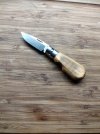
Their catalog is very interesting and full of novelties. Their pocket knives range from your regular traditional thiers patterns to some really neat modern takes on the traditional patterns.
This is just a nice little olivewood utility knife. The lock is a total ripoff of an opinel. Lol! That's ok though, it's very strong. The shape fits really well in hand and gives a really nice grip for such a small size.
It is chisel ground I guess you could call it. Only ground on one side. Like a florist knife. Still sharp as a razor.


draggat
Gold Member
- Joined
- Jul 26, 2010
- Messages
- 3,068
This week, I have a pair of Capucin's by Savignac. The completist in me had to have the stainless and carbon versions...... Stainless uses a hex screw and carbon a pin with collar.

- Joined
- Jun 4, 2015
- Messages
- 6,140
Puy Cerviers are made by the "Vielles lames" (Old blades) association and the shape is globally a navette. "puy" is the name given to the top of mountains in centre of France (Massif Central) mainly extinct volcanos, where Thiers, Laguiole belong.
Cervier is the old name for wolf who attacks stags (Cervarius). Amazingly "loup-cervier" is another name for the lynx.
I have no idea why 14C27 is used, probably because it is a tradition, is widely available over the counter and easy to deal with, in the making or the use of the knives. 14C28 is an improvement, but to most not worth the price tag nor the less easy sharpening. Other steels are too expensive, except for top end makers and probably too difficult to sharpen to use them on regular knives (except top end kitchen knives).
draggat
Gold Member
- Joined
- Jul 26, 2010
- Messages
- 3,068
Very interesting! Thank you for the explanation!Puy Cerviers are made by the "Vielles lames" (Old blades) association and the shape is globally a navette. "puy" is the name given to the top of mountains in centre of France (Massif Central) mainly extinct volcanos, where Thiers, Laguiole belong.
Cervier is the old name for wolf who attacks stags (Cervarius). Amazingly "loup-cervier" is another name for the lynx.
I have no idea why 14C27 is used, probably because it is a tradition, is widely available over the counter and easy to deal with, in the making or the use of the knives. 14C28 is an improvement, but to most not worth the price tag nor the less easy sharpening. Other steels are too expensive, except for top end makers and probably too difficult to sharpen to use them on regular knives (except top end kitchen knives).
I don't think I own a knife with 14C27. All of my stainless French knives are either Inox (mystery steel I guess) 12C27 or 14C28N. I can't say I use them enough to notice much difference. Then again, I tend to be a steel snob in that I would much prefer a basic, easy to sharpen steel, as opposed to stuff like M390. That actually makes me pause on a knife purchase because I hate sharpening super steel.
Here's a friction folder in olive and XC75 by Julien Maria.
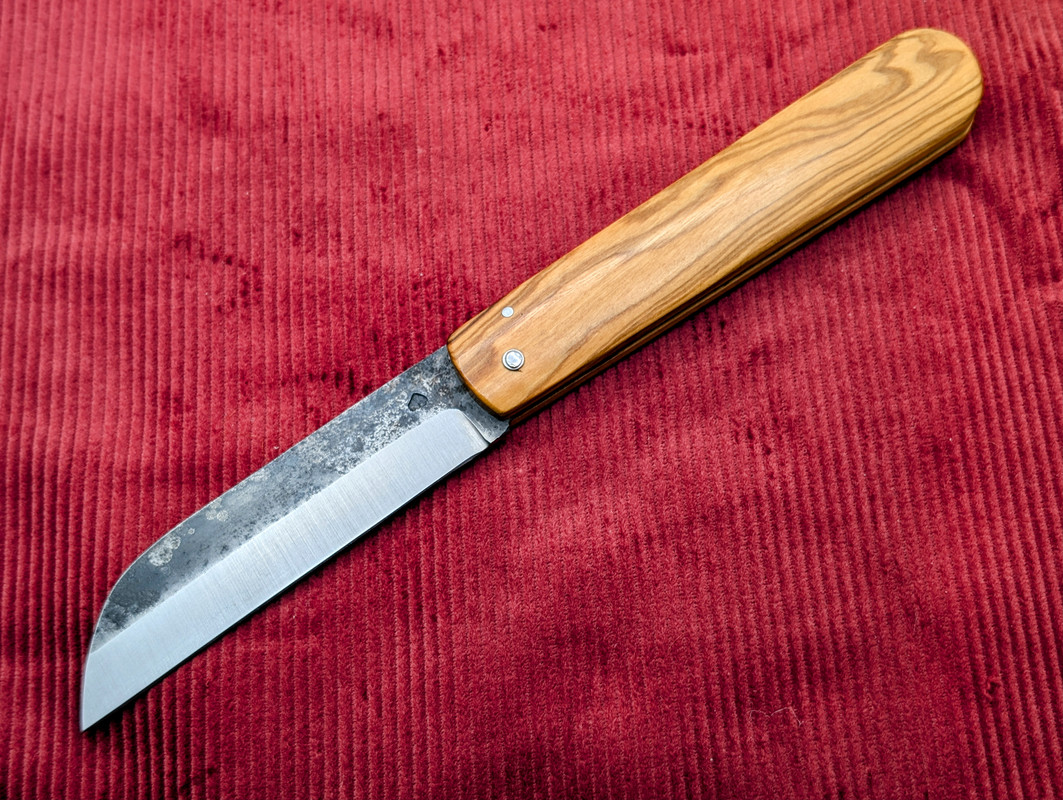
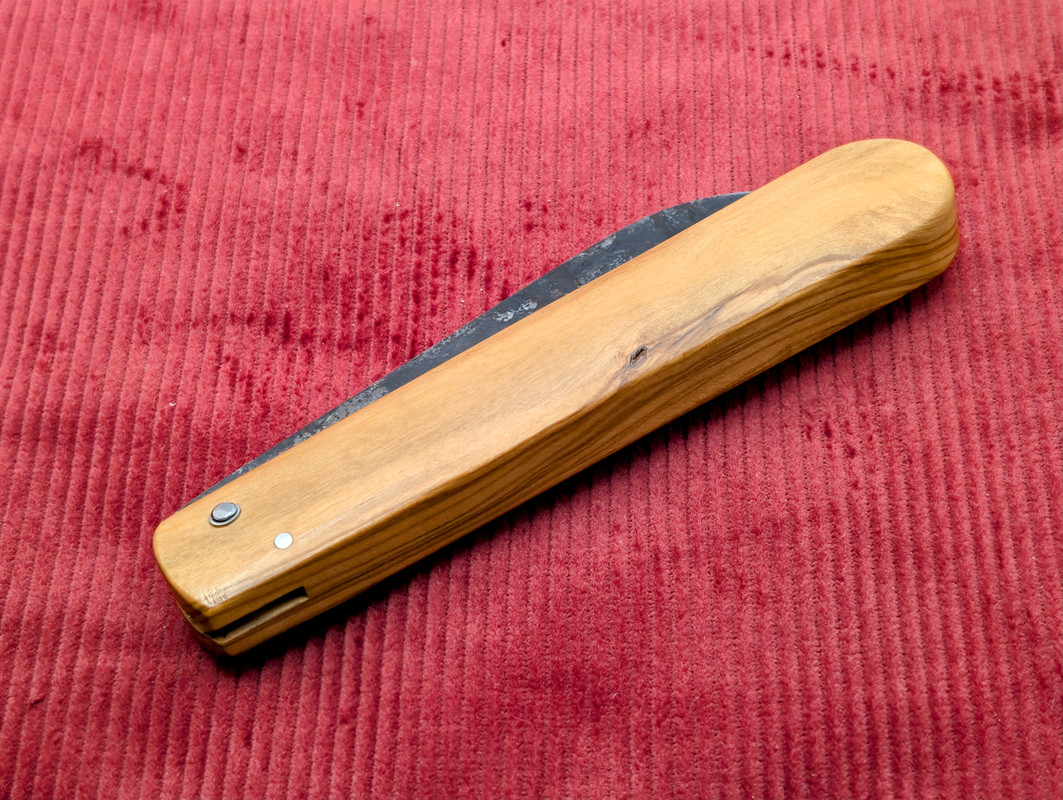
The Zieg
Gold Member
- Joined
- Jan 31, 2002
- Messages
- 5,007
Very nice!!Very interesting! Thank you for the explanation!
I don't think I own a knife with 14C27. All of my stainless French knives are either Inox (mystery steel I guess) 12C27 or 14C28N. I can't say I use them enough to notice much difference. Then again, I tend to be a steel snob in that I would much prefer a basic, easy to sharpen steel, as opposed to stuff like M390. That actually makes me pause on a knife purchase because I hate sharpening super steel.
Here's a friction folder in olive and XC75 by Julien Maria.

draggat
Gold Member
- Joined
- Jul 26, 2010
- Messages
- 3,068
Thank you!Very nice!!


